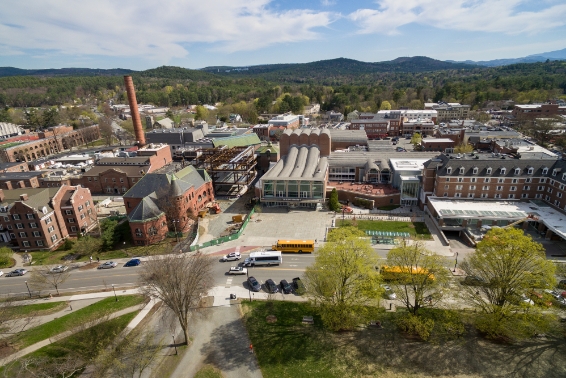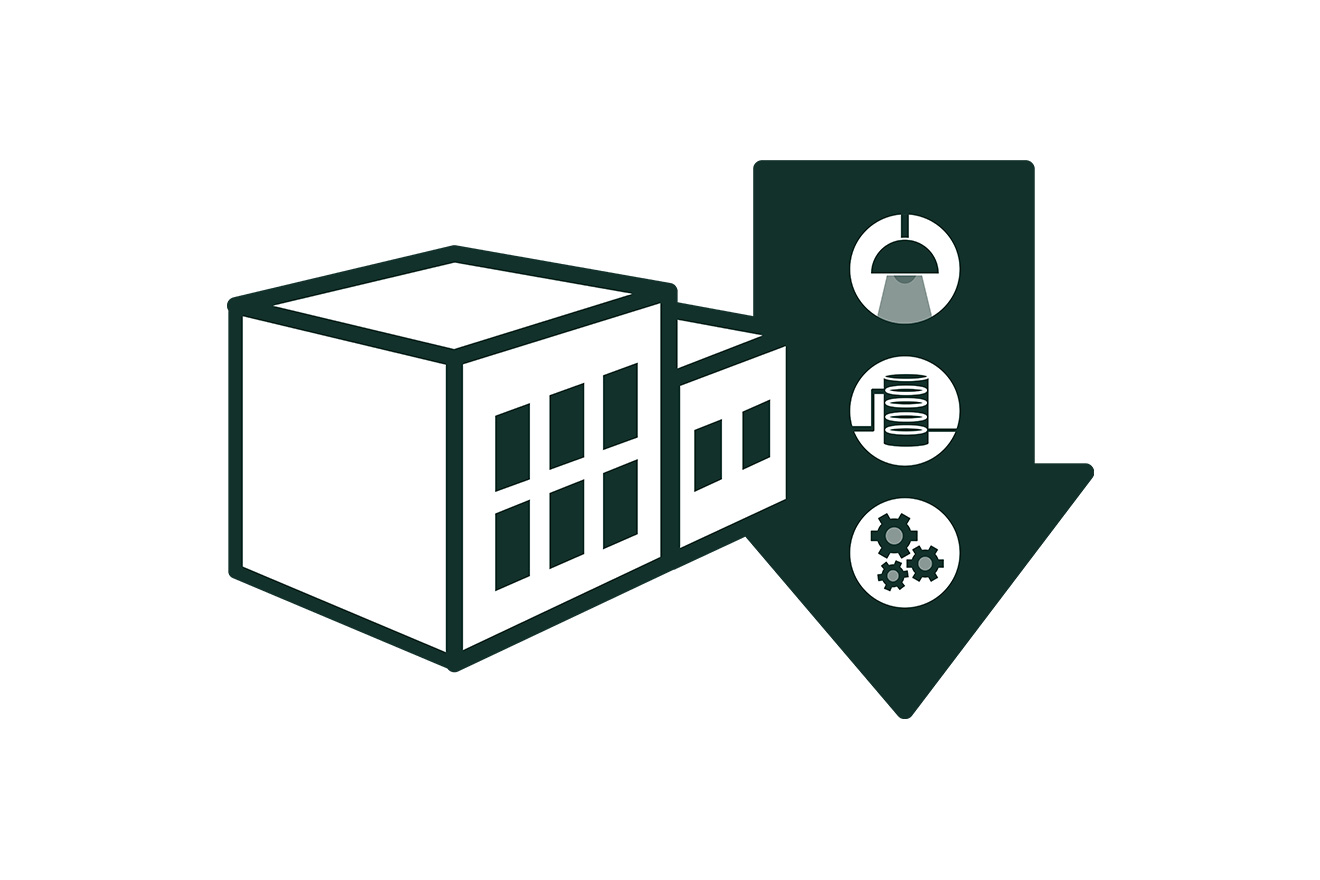Geo-Exchange
What is Geo-Exchange?
On most campuses, a large portion of overall energy consumption is used to heat and cool buildings. Geo-Exchange is a highly efficient technology used for that very purpose.

Geo-exchange works like a heat storage piggy bank.
In summer, excess heat is drawn out of buildings, making them feel cooler and more comfortable. This heat is transferred to water that is pumped deep underground in a closed loop pipe system. The heat warms surrounding rock and soil, using the earth to store that heat until it is needed in colder months. When the weather gets chilly, the pipes draw heat out of storage and transfer it into the buildings using an electric heat pump.

Why is it a good choice for Dartmouth?
Dartmouth’s geoexchange plan provides yearround heating and cooling by moving heat to where it’s needed or storing it in the ground. Watersource heat pumps tied to geoexchange borefields increase system efficiency and lower operating costs. Because it relies on distributed borefields and modern equipment, the geoexchange system will be more resilient and reliable than our aging steam infrastructure. In addition, the system can operate on renewable electricity, reducing emissions as we modernize.
More about how it works

Strategy
Dartmouth’s energy strategy centers around four main principles: Reduce energy demand, steam to hot water transition, low-emission heat sources, and clean, reliable electricity.
Technologies
These decarbonization components will work together to efficiently meet energy needs, provide necessary backups, and ensure our buildings and systems run efficiently.

Steam to Hot Water Transition
To use technologies like geo-exchange, we are updating piping that routes heating and cooling throughout campus.